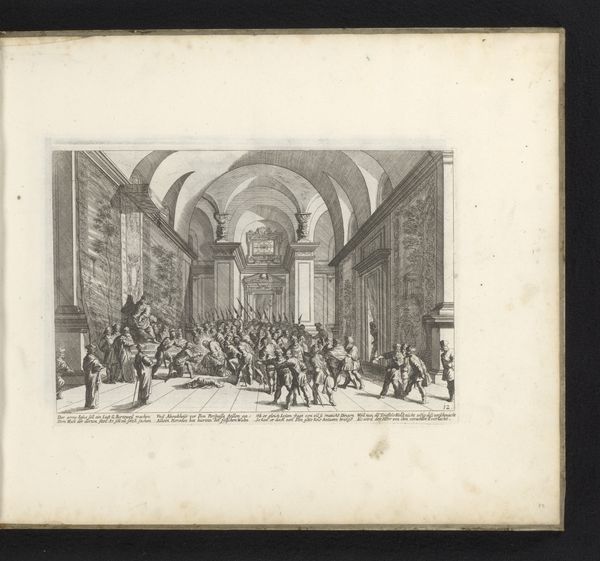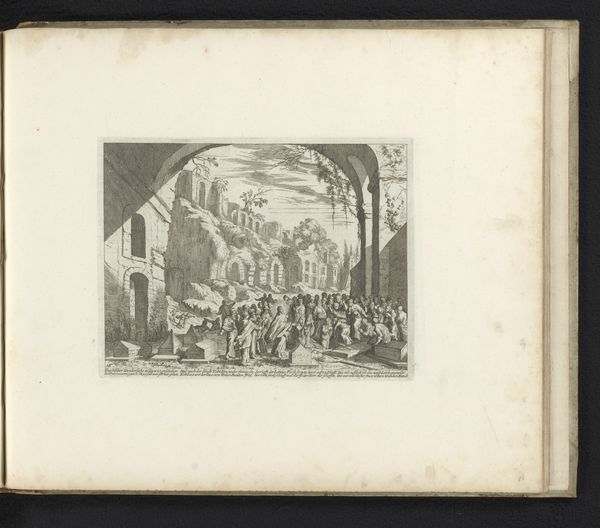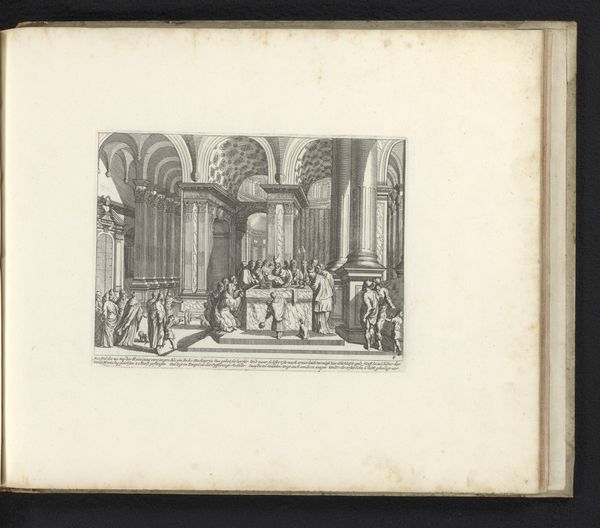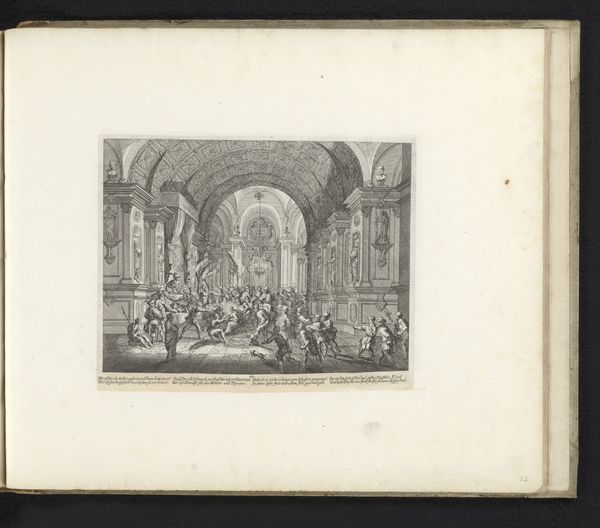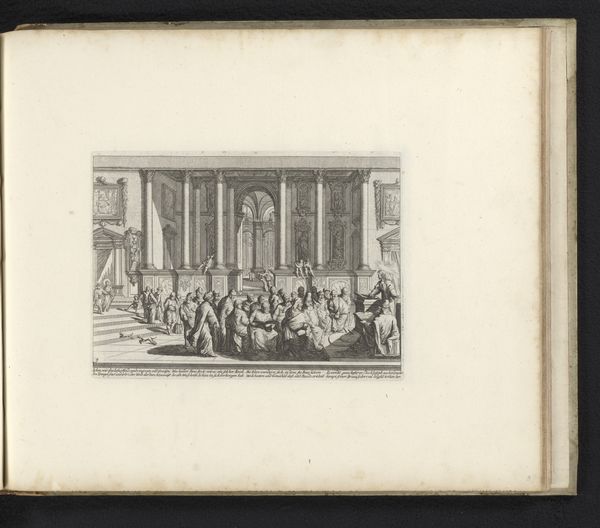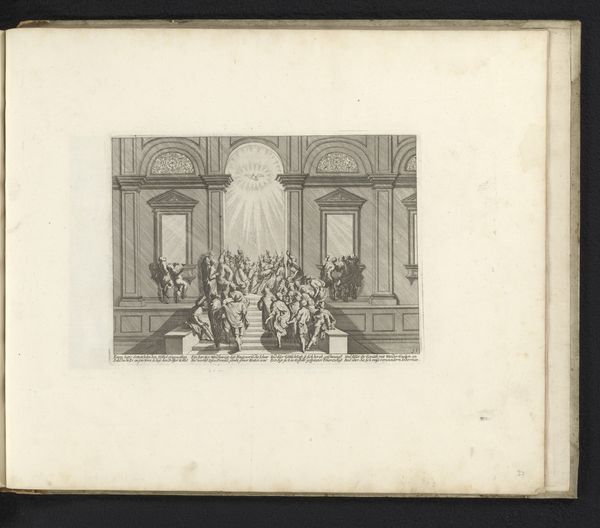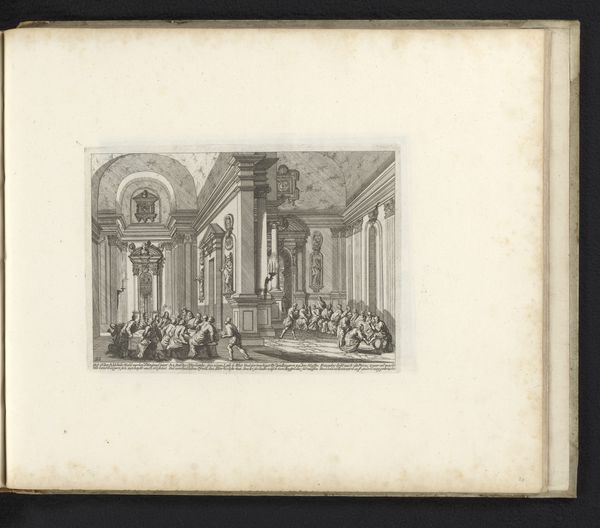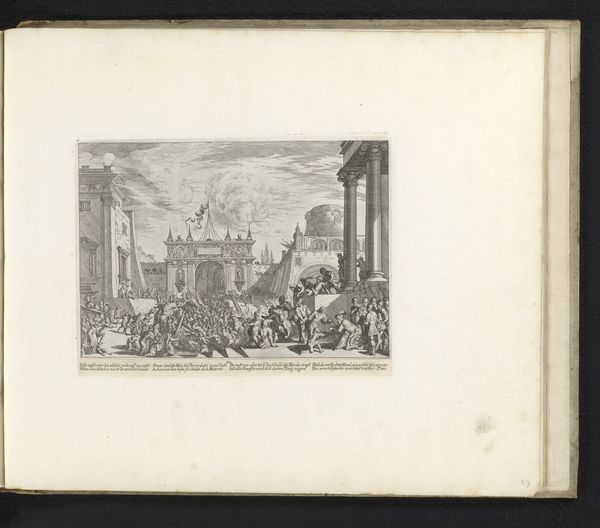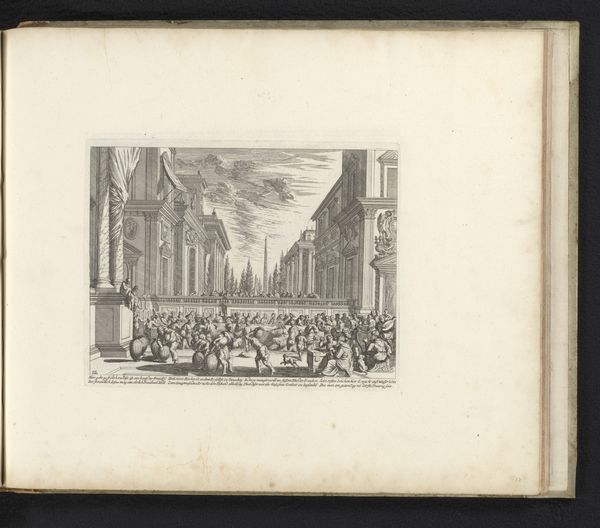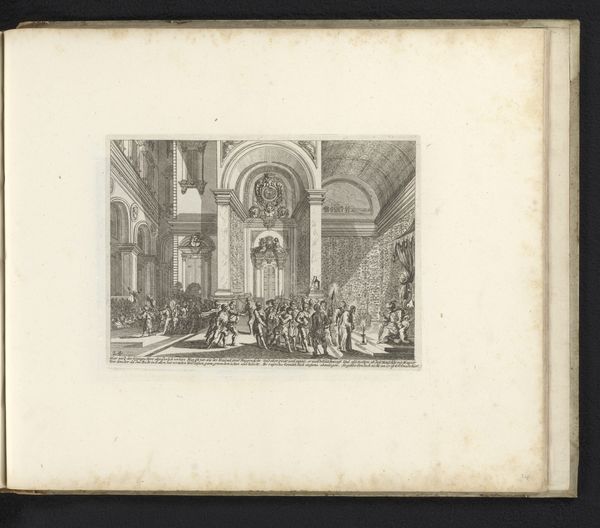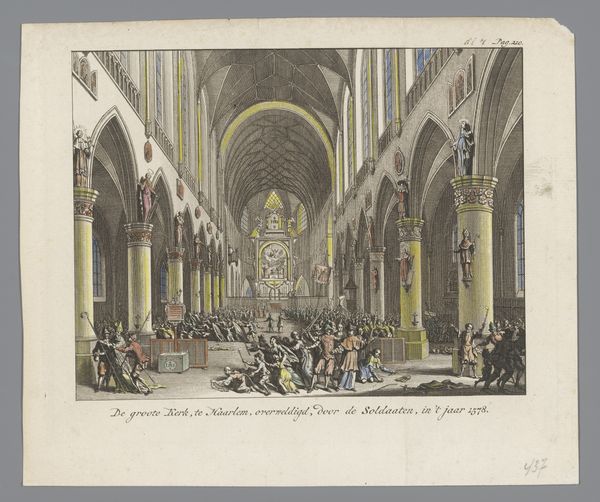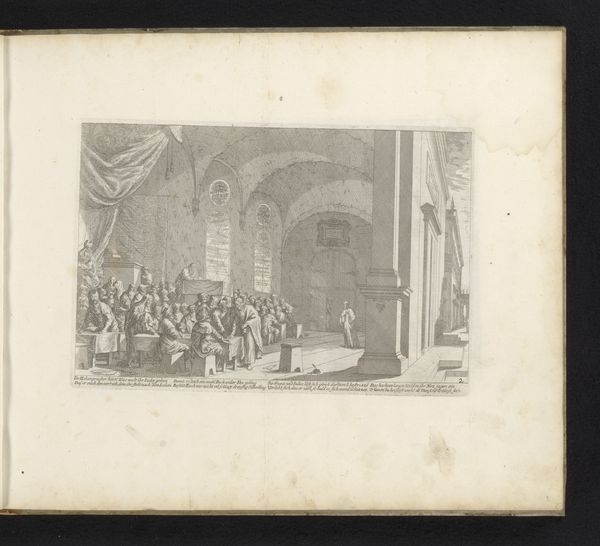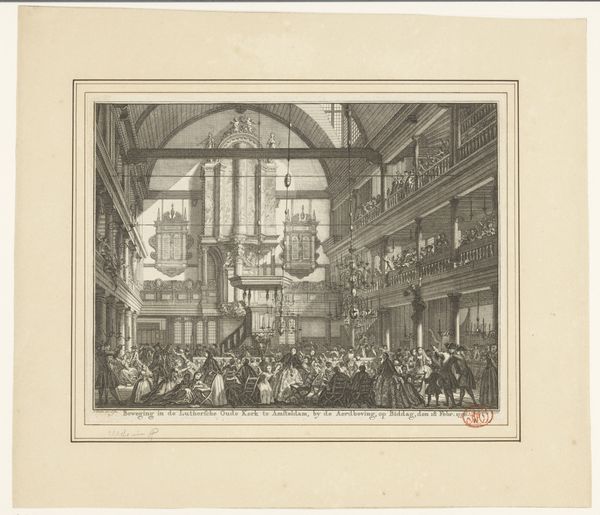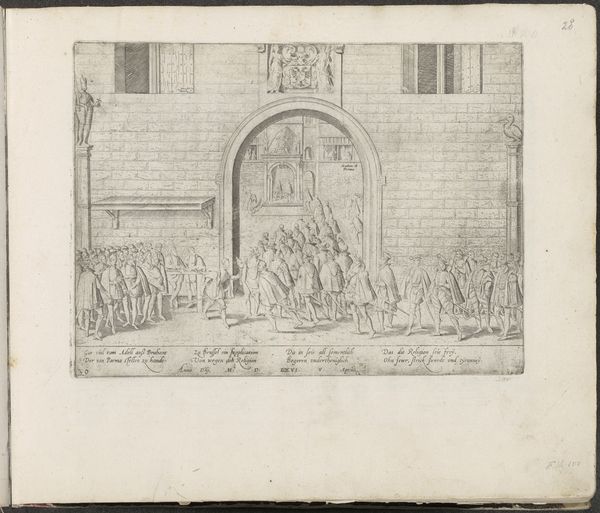
print, paper, ink, engraving
#
narrative-art
#
baroque
#
pen drawing
#
ink paper printed
# print
#
figuration
#
paper
#
ink
#
history-painting
#
engraving
Dimensions: height 173 mm, width 253 mm
Copyright: Rijks Museum: Open Domain
Curator: Look at this print, titled "Bespotting van Christus", or "The Mocking of Christ", dating back to somewhere between 1670 and 1682. It’s currently housed here at the Rijksmuseum and was created by Melchior Küsel, primarily using ink on paper in an engraving style. Editor: Wow, there's a haunting sense of isolation emanating from this work. The linear details in shades of grey convey so much tension within that crowded space. What do you see regarding process or labor? Curator: The dense lines of the engraving itself suggest an incredible investment of labor. Think about the cultural and social context: prints like this, reproduced and disseminated widely, played a vital role in spreading religious and historical narratives to a broader audience, functioning almost as a news medium. It begs the question, who consumed such images, and what was the effect of repeated exposure to scenes like this? Editor: Yes, those fine lines add almost like, an unreal touch, creating a painful depiction in my opinion, that is very moving. Is this typical Baroque? I feel its impact so deeply, there is almost this emotional, raw nerve laid bare through a network of cuts...I feel I should be crying here. Curator: It aligns, I think, with Baroque's dramatic flair and intensity, though within the confines of printmaking. Consider the materials: the cost and accessibility of paper and ink would dictate the potential reach and the socioeconomic status of its consumers. Each strike of the engraver’s tool marks the transfer of power, faith, or authority of the maker. Editor: Yes. Each person in that room would know what a nail feels like as it punctures the hand, I see so much pain here, and you, by observing how it was made, bring to the work an insight to make that pain...understandable. Curator: So the medium, technique, and context all blend into something of a visual history. These works were not merely aesthetic objects. Editor: Thinking about it that way almost pulls it to our lives, doesn’t it? Thank you!
Comments
No comments
Be the first to comment and join the conversation on the ultimate creative platform.
